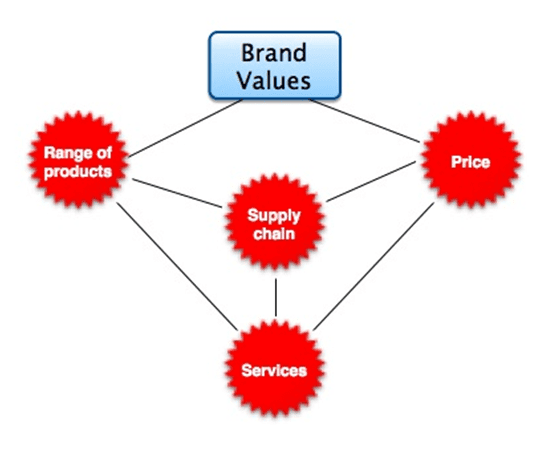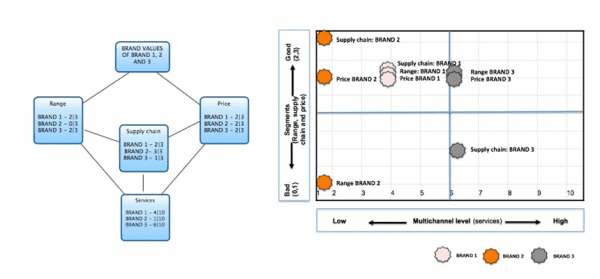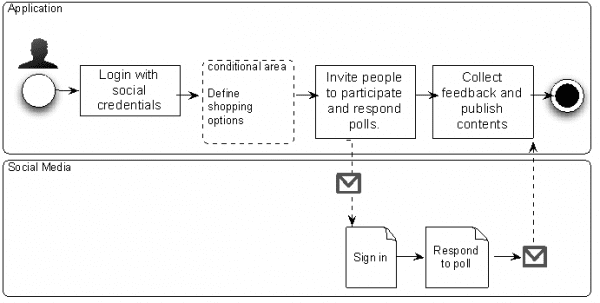Customer experience management (CXM) for multichannel commerce - moving from insights to action in 4 steps
In my previous post on practical improvements to CXM, the advice was around creating a path in your organisation that includes customer journeys. This article explains how you can plan a better customer experience for multichannel commerce. By implementing certain steps in your organisation you can overcome the difficulty of creating and implementing actionable insights based on qualitative data.
Planning is the process of thinking and organising a group of activities towards desired goals. There is not a convenient one-size fits all solution for structuring your customer experience. It is important however to build a structure that gives you the control and flexibility you need to grow.
Most organisations are now looking at the opportunity given by multichannel commerce by including their customers into the brand’s journey.
But to improve the customer experience all you need is a cross-functional project team.
Cross-functional project teams are usually created for specific strategic projects, like implementing a better customer experience for example.
Four steps to improving the customer experience
This blog post is about applying 4 steps towards a better customer experience in your organisation:
-
Step 1 - All plans are subject to change. Plan for change:
The difference with successful projects is that they plan the possibility of change by establishing frameworks and procedures in advance in order to manage the key performance factors: scope, quality, time and cost.
To meet the business challenges of complexity and uncertainty, many organisations are adopting an agile approach. The term ‘agile’ is derived from the ‘Manifesto for Agile software development’, that describes an iterative method of determining requirements in development projects and a highly flexible and collaborative way of working based on 12 principles.
According to Standish Group, agile techniques deliver business critical solutions at 40% lower cost, 50% faster, and with significantly greater fit (to scope) and increased quality.
In agile the main methodologies/ frameworks include:
Within an agile approach one does the minimum specification and planning work at the start and then adapts as the project progresses. Being agile is being responsive rather than predictive.
Let’s take a closer look at the high street and analyse what happens to businesses when they become more agile.
Fast fashion giants like Zara (Inditex group) are presently looking at 2 to 4 week deliveries from trend to garment in store. This means that any fashion trend can be available to everyone in less than one month.

Source: Supply Chain Management
-
Step 2 – The service has become the most important differentiator. Redefine the rules of engagement:
In this environment of fast retailing it becomes very dangerous to compete based on a pricing architecture strategy since customers can search Google to find the exact same product or a very similar one at a cheaper price.
As a result of this ‘search’ behaviour, service has become an important differentiator. Customers may pay more for the same product, as long as the service is better than the service offered by competitors in the same segment.
From experience, investments in the fashion industry can be expensive, especially when a company is trying to climb the ladder of the multichannel offer very quickly.
So the focus should be in offering customers a more positive customer experience, redefining the rules of engagement with an operating model that moves away from silos, towards an agile customer centric approach.
Most successful brands are already striving to create great experiences as opposed to simple convenience or best price (e.g. even typical price driven companies like ASDA
Online platforms are a major player in this environment, although E-commerce alone is not enough to explain the success of some businesses. The truth is that some brands know better what customers want and understand faster than its competitors how to deliver a great experience.
-
Step 3 – Brand personality is key. Apply the multichannel prism framework:
Part of that great experience can be delivered if you realise that consumers are tech savvy and connected with new and more complex buying behaviours.
In the digital landscape brand personality became the key element of shopping behaviour.
In the search for a consistent personality across channels multichannel brands are putting their values at the centre of everything. Questions like how the brand should ‘behave’ in terms of range of products, price, supply chain and services are in my opinion defining the agile market leaders of today.

Below is an example of how the ‘multichannel prism’ framework was applied to define gaps in service offerings.

Three brands are compared in terms of product range, price and supply chain, considering the number of services as a metric to define the multichannel level each brand belongs to.
Brand number 1 represents the brand we want to analyse, brands 2 and 3 are competitors that were chosen because of their similar brand values (assumption based on a study to analyse brand perception).
In a quick gap analysis the key-points for BRAND 1 are the following:
- Superior than BRAND 2 in range and than BRAND 3 in supply chain;
- Similar to BRAND 2 and 3 in price;
- Similar to BRAND 3 in range;
- Worst than BRAND 2 in supply chain;
- More multichannel than BRAND 2 and less multichannel than BRAND 3.
-
Step 4 – Move away from silos. Decide your business case and design the service:
Considering the gaps, the scope for planning may result in the implementation of one of the following services:

Imagine that the decision goes to ‘Sustainability in the same market segment’. Now, the next step is to design the service in a way that facilitates the communication between departments involved in the process. Below is an example of the initial approach to discuss scope.

This service becomes part of the retention strategy for BRAND 1. Mature brands know that loyalty schemes are an important tool to connect with customers and increase retention, but like any marketing effort, they require creativity to make sure they stay relevant for customers as well as the market.
The connection with social networks will facilitate sharing information, getting new and relevant data and will also bring an easier approach to the application’s login.
One important area is how you will measure what you have planned. How will you define KPIs (Key Performance Indicators) for all departments and for all management levels?
In the third blog post of this series, I will explain a possible approach to monitor performance for customer acquisition and retention.

Thanks to Maria Morais for sharing her advice and opinions in this post. Maria is a Digital Commerce Consultant with a deep understanding of enterprise alignment with the pace of change: from customer insights to product & service development. She regularly leads complex assignments involving research, data analysis, team structures, communities and business performance, to help brands and retailers make better-informed decisions in all areas relating to digital commerce. She is a regular contributor to various industry publications and blogs. You can follow her on
Twitter.








 Thanks to Maria Morais for sharing her advice and opinions in this post. Maria is a Digital Commerce Consultant with a deep understanding of enterprise alignment with the pace of change: from customer insights to product & service development. She regularly leads complex assignments involving research, data analysis, team structures, communities and business performance, to help brands and retailers make better-informed decisions in all areas relating to digital commerce. She is a regular contributor to various industry publications and blogs. You can follow her on
Thanks to Maria Morais for sharing her advice and opinions in this post. Maria is a Digital Commerce Consultant with a deep understanding of enterprise alignment with the pace of change: from customer insights to product & service development. She regularly leads complex assignments involving research, data analysis, team structures, communities and business performance, to help brands and retailers make better-informed decisions in all areas relating to digital commerce. She is a regular contributor to various industry publications and blogs. You can follow her on 


